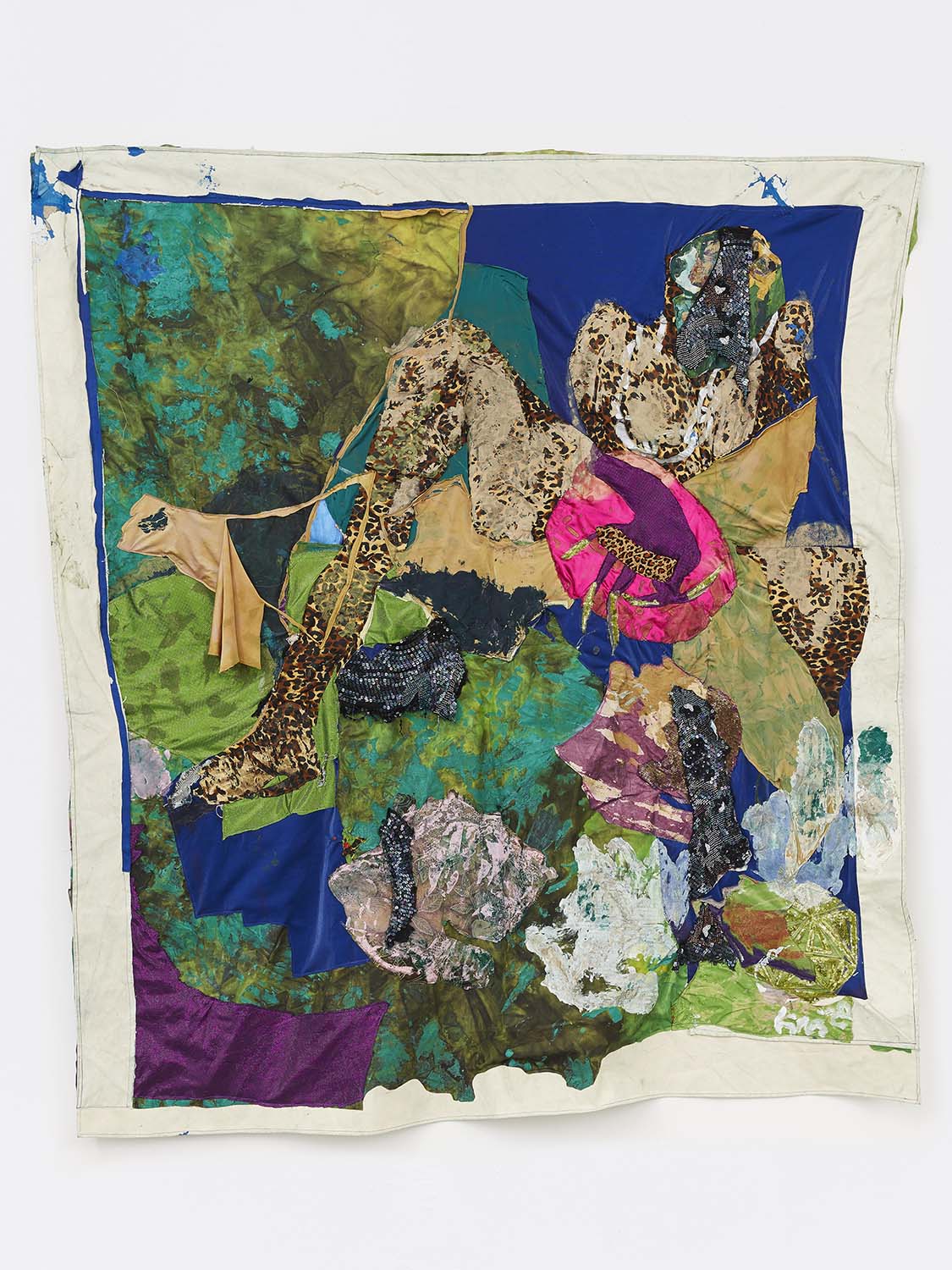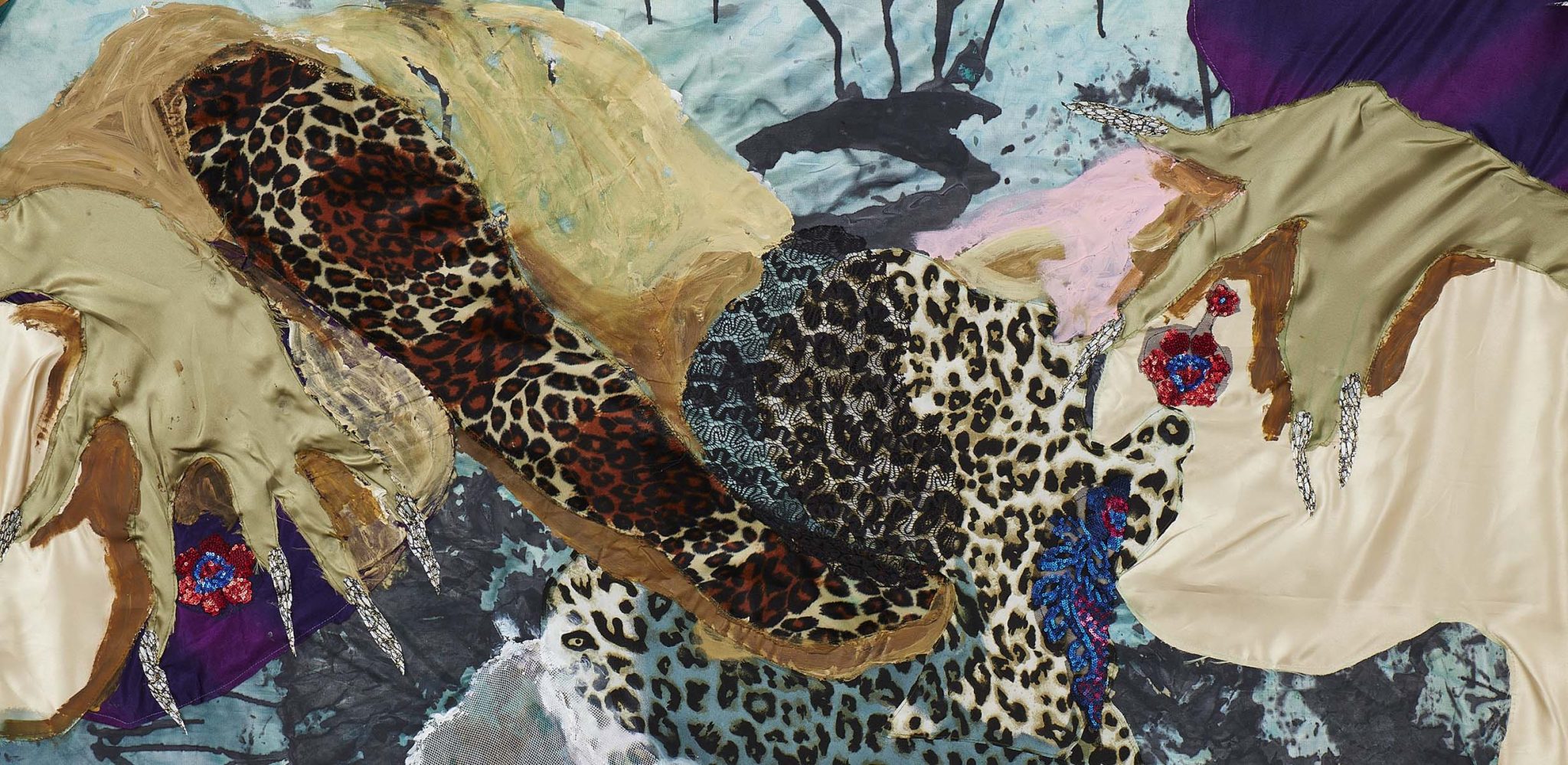Mukwazhi incorporates into her art the very macroeconomic processes that push many Zimbabwean women into sex work
Kresiah Mukwazhi’s exhibition Mukando is dominated by the Zimbabwean artist’s roughly assembled, sometimes painted textile works, wall-based as well as suspended. Figuration repeatedly dissolves into the individual fabric pieces that make up the completed cloths. Not everything that glitters is gold (all works 2020) is a wild pastiche suggesting a female figure with lasciviously spread legs, a pink cushion pressed into the pubic area. The voyeuristic feel correlates with the fabrics used: petticoat material, sequined fabrics, leopard print for the woman’s silhouette. Zviratidzo zvenguva (Shona for Signs of the Times), however – colourwise dominated by bluish petticoat on mattress fabric and showing a woman’s torso, an area painted white replacing her head – encodes the account of a friend, a sex worker who was, according to the artist, almost suffocated with a plastic bag in an attack by a punter. Here, Mukwazhi pushes the ambivalent reality of Zimbabwe’s nightclubs in our faces: the country’s economy, corroded by corruption, forces a high percentage of women into prostitution, where they are increasingly exposed to male violence and exploitation.

Yet Mukwazhi portrays these women as powerful seductresses playing with men’s gazes. In her art, animal prints undergo a transformation from garish workwear to representing the very skin of the women themselves, such that the exaltation of the prostitute as feline predator here isn’t utterly uncoupled from precarity. And, seemingly, beauty and brutality enmesh even further. Many of the fabrics used – eg petticoats, and the pompoms used in strip clubs – attract and tempt, yet these textiles are riddled with rips, dirt, traces of invasive dyes. In addition they feature a Bollywood-esque kind of ornamentation that is historically rather uncommon in Zimbabwe, but became more common as the African continent was flooded with cheap textiles originating in South Asia. Mukwazhi thereby incorporates into her art the very macroeconomic processes that force many Zimbabweans into sex work.
Giving in to fatalism concerning this painful economic decline would be justifiable; instead the artist shifts the focus – via the exhibition title – to the possibility of empowerment and self-organisation. Mukando is a self-governed and trust-based savings society, through which sex workers and others on the fringes of local society help each other financially, organise and support one another. By analogy, Mukwazhi’s works additionally reveal themselves as embodiments of the social fabric; blending pragmatism and pathos, she turns a heap of scraps into a dazzling whole.
Translated from the German by Liam Tickner
Kresiah Mukwazhi: Mukando was on view at Jan Kaps, Cologne, 4 December – 13 February 2021
